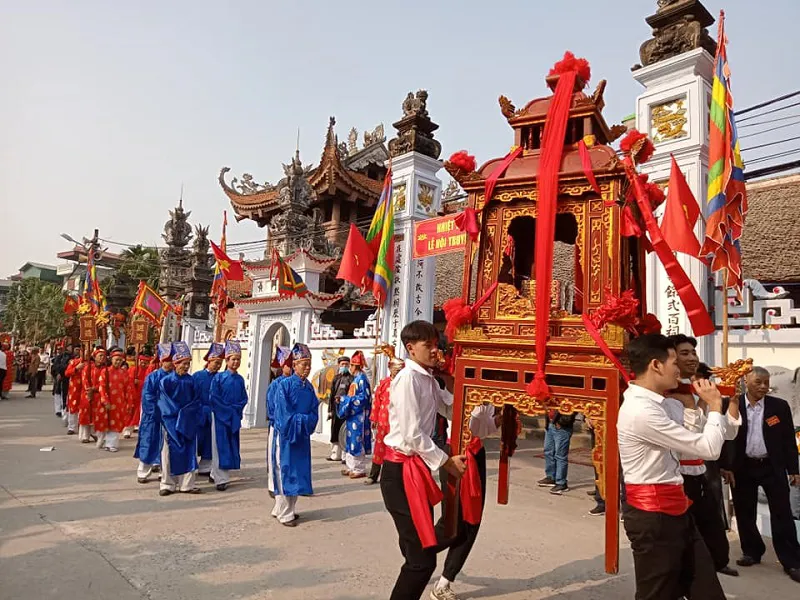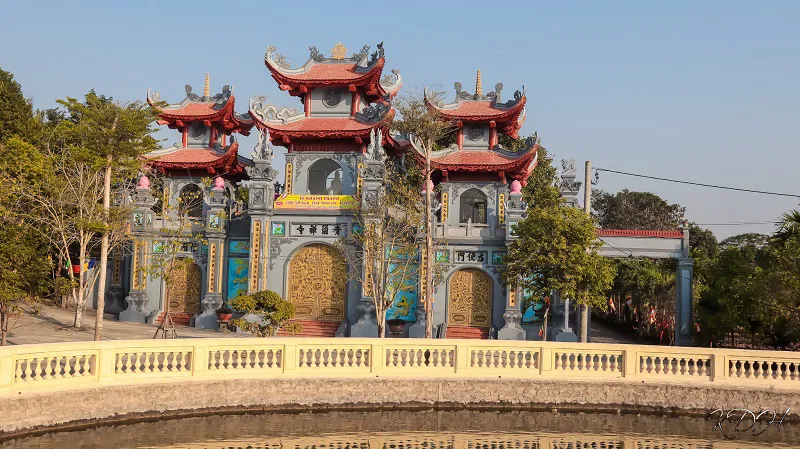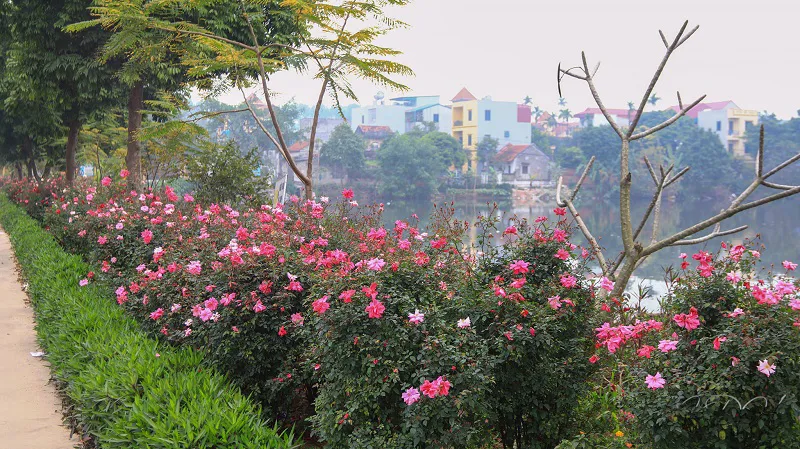Two new suburban tourist spots diversify Hanoi’s travel options
The new travel attractions are expected to enrich the tourism industry in the capital city.
Two wards in Hanoi's Thanh Tri District, namely Dai Ang and Yen My, have been recognized as tourist spots following the recognition of the district's 14 wards as advanced new-style rural areas, adding to the city's tourism models.
| Dai Ang Communal House, Dai Ang Ward, Thanh Tri District, Hanoi. Photo: Quoc Hung |
Local authorities are asked to operate tourist spots by Tourism Law and related documents to protect and preserve them.
The chain of spiritual and experience tourism of Dai Ang
Dai Ang has been the pride of Thanh Tri District since it became one of the first wards of Hanoi to be recognized as a new-style rural area in 2013.
The tourist spot of Dai Ang features such attractions as Dai Ang Communal House, Thien Phuc Pagoda, Nguyet Ang Scholarly Village’s Temple of Literature, Nguyet Ang Communal House, Vinh Thinh Communal House, Thanh Duong Pagoda, Hoanh Son Temple (Vinh Thinh Commune), Linh Linh Shrine (Vinh Trung Commune), Ung Linh Pagoda and Vinh Trung Communal House.
Among them are nine national-level relics and one city-level relic, which together form an ideal cluster for spiritual and experiential tourism, attracting tourists for sightseeing and exploring the traditional history and culture.
| Dai Ang Traditional Festival 2022. Photo: Quoc Hung |
On the journey in Dai Ang Ward, tourists can also visit Vinh Thinh conical hat craft village, which is hundreds of years old, a rare craft village in the capital city.
Besides old-fashioned features, visitors can experience the American technology-based fish farming model called ‘River in a Pond’, run by Dai Ang Hi-tech Fisheries Cooperative, a proven brand name in clean agriculture. Its products are sold to local markets, supermarkets, companies, and schools and exported to the US with positive customer feedback.
Thanks to its cultural-historical charms, Dai Ang Ward welcomed over 9,600 international and domestic arrivals between 2020 and 2022, generating high economic value for the locality.
Ecological and historical destination in Yen My Commune
Meanwhile, located along the Red River dyke and about 12 kilometers from downtown Hanoi, the Yen My countryside has a rich history, notably patriotic and revolutionary traditions. Looking north from Dong My Ward or south from Yen So Ward, visitors can admire the panorama of the poetic river landscape of Yen My.
| Yen My Pagoda in Yen My Ward, Thanh Tri District, Hanoi. Photo: My An |
Yen My has a village and four relics: a communal house, a pagoda, a goddess temple and Dang ancestral shrine, and a temple of literature. In particular, the pagoda-communal house cluster was recognized as a national-level historical-cultural relic by the State in 1995, while the goddess temple and the Dang ancestral shrine have been proposed to be listed as city-level relics.
Coming to Yen My, tourists can visit the Yen My Communal House - the most important cultural-spiritual building for both the ancient village and the modern Yen My people. Built in 1837, the communal house sits on a high, airy mound with favorable terrain.
Nearby, Yen My Pagoda - or Thanh Lan Pagoda - is an ancient temple with the Tam Bao (the Three Jewels) altar devoted to Buddha, a goddess altar devoted to 3 goddesses, especially the sacred stone commonly known as the Bodhisattva Rock or Goddess of Mountains and Forests. Through several restorations and embellishments, the pagoda is now magnificent and was recognized as a national-level historical-cultural relic by the State in 1995.
In addition, Chua Mountain is a long-standing relic complex featuring 200 species of trees, some of which are rare. On the top of the mountain is a sapphire rock brought here from Ngu Hanh Son or Marble Mountains in the central coastal city of Danang, with the tale of Chua Mountain written on it.
| A flower road of Yen My Commune, Thanh Tri District, Hanoi. Photo: My An |
Yen My has many fascinating ecotourism areas, such as Hai Dang, Dam Tron, Van An, Vuon Chim Viet (a hydroponic vegetable garden). In particular, Vuon Chim Viet is one of the first private establishments in the country to be granted a special license to raise rare livestock and poultry species. Visitors can see many species of birds, including peacocks, pheasants, white swans, black swans, and mandarin ducks, as well as rare animals such as camels, ponies, or kangaroos.
The two newly-recognized tourist sites will be a crucial precondition for forming tourist routes in the district and cooperation with neighboring localities. Thanh Tri District strives to be a ‘safe - friendly - quality - attractive’ destination to meet the requirements of tourism development in the new situation.















